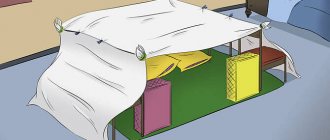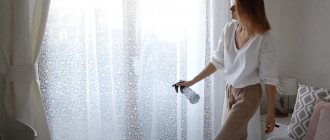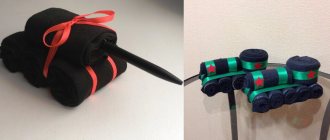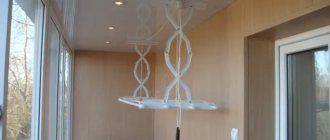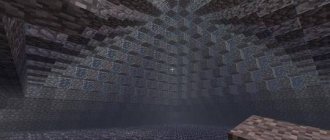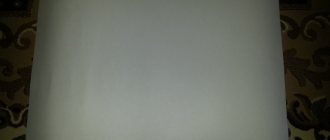Store-bought barrier
It’s another matter if a child’s bed restrainer is attached to the edge. The worry is over. Parents sleep peacefully, and the baby is reliably protected from falling. The barrier is mobile, easy to remove and easy to clean.
Growing up, the child begins to actively explore the world around him, and no obstacles can stop him. Many people protect sofas with pillows, rolled blankets and blankets. Nothing helps, the baby crawls over such fences just fine. To prevent him from breaking his head when he falls, you need to place a thick blanket on the floor. Because of such protection, the apartment is in complete chaos. But if you put a border-limiter for a children's bed, then this problem would never arise. This useful item can be used at the dacha, at a party, in a train carriage, or in a hotel.
Colors and design
The market offers a wide range of color and design solutions for these products. Everyone will be able to choose a suitable decorative design for their limiters.
Note! It is very important for kids to have various pictures around them so that they can quickly explore the world and focus their attention on an attractive picture. It may not be a bright product, but the presence of figures and other images is desirable.
For older children, you can choose less varied patterns, paying more attention to the combination of colors with interior design. You can choose a design depicting multi-heroes that your child loves.
Do-it-yourself soft baby bed restraint
For newborn children, they mainly use soft bumpers, which are filled with foam rubber or padding polyester, lined with fabric on both sides. It is advisable to choose natural and hypoallergenic material. Such a barrier is secured with Velcro or ties sewn around the perimeter of the rectangle. The number of sides can be chosen as desired. Many people install strips on all four sides of the bed to prevent the child from hitting the wooden bars.
It is very easy to sew a soft children's bed restrainer with your own hands. To do this, you need to carefully measure the length of the side and think about what height to choose for the future barrier. It depends on the child's activity. Buy the necessary materials: cotton fabric, padding polyester, Velcro tape, piping. Cut the padding polyester according to your measurements and attach rectangles of fabric cut to size on both sides. Do not forget to retreat 5 cm from the filler on all sides. Sew all layers with a stitch, folding the fabric inward 1 cm. At the time of sewing on the machine, sew the piping around the perimeter of the material. The barrier will have a dense and finished appearance. At the end of the work, all that remains is to add ribbons or Velcro at the corners to attach the barrier to the wooden rods.
Do-it-yourself wooden limiter for a children's bed
When the child grows up, he is transferred to another bed, without bars. The baby is used to spinning freely in his sleep and continues to do so in a new place. Parents understand that there is a danger of falling out of bed. To protect your baby from bumps and night terrors, you need to install a limiter-barrier for the children's bed.
Making a wooden structure is not difficult. Even an amateur can easily cope with this. Take 4 slats of the same size and 2 long ones, equal in thickness to the side slats of the bed. They are connected to each other at right angles so that the barrier parts are in the middle of the U-shaped product. The result is a device that is easy to put on and take off.
Another children's bed restrainer not only has a protective function, but also brings beauty to the bed's decoration. Using your imagination, a piece of plywood or MDF, a pencil, a jigsaw and a few bolts, you can bring any idea to life and become a designer yourself. For boys, make a car or carriage. For a girl - flowers, a caterpillar or a house with a fence.
Colors and decor
Among the variety of decorative options for bed restraints for children, everyone can easily find the perfect one for themselves. There are several nuances that will help make the choice easier. Modern psychologists unanimously claim that the younger the child, the more important it is for him to have different colors, patterns and details in his sleeping area. Looking at them every day, the baby develops vision, perception of color, size and perspective. Therefore, it would be a mistake to purchase monochromatic designs - it would be better if they had a small print of delicate pastel colors.
Traditionally, pink interior items are chosen for girls and blue for boys. This is an optional rule. Combinations of simple colors in soft shades look good - blue and yellow, green and pink.
An older child’s room or corner can be decorated in simpler shades, repeating the color scheme of the nursery’s interior. It’s good if it reflects the baby’s character or his hobbies. For a comic book lover, you can choose models with superheroes depicted on them, and for a young car collector, you can choose a racing track.
Design options for a pull-out bed for two children, assembly order
When choosing a design option, it is important to pay attention to the properties of colors. So, yellow lifts the mood, green calms, and orange excites the psyche. In any case, it is recommended to refrain from an abundance of such active colors as black or red, or introduce them very carefully, with small color accents.
Making a barrier from plastic pipes
A barrier-limiter for a children's bed can also be made from plastic plumbing pipes. You will need a special tool to cut such products, pipes of small diameter and connecting corners of the same cross-section.
Using this scheme, take from 5 to 7 straight tubes of the same size, cut small connecting ones up to 20 cm, and assemble the structure using corners of different configurations. Straight sections of the barrier are secured with T-shaped corners, the edges with L-shaped corners. To attach the holder of the future barrier, choose them with 4 holes.
Foam tube construction
The lightest and simplest limiter is a design made of dense insulating foam pipes. You can fit one piece on both sides of the bed, connecting them under the mattress with ribbons.
If a larger barrier is required, then you need to take 3 pipes and also tie them together or fasten them with thick gray tape. The design is easy to assemble; even a baby’s mother can do it. The products are quite soft, so a child will not feel pain when hit with a foot or hand. At the same time, the foam rubber is elastic and does not deform when pressed. The parts can be easily disassembled and washed.
Having made a barrier for the bed themselves, parents can be absolutely calm about the safety of the baby. A self-made limiter will serve for a long time, reliably, and its cost is lower than a purchased one.
How to make a baby bed limiter with your own hands
When a small child sleeps, it is very important to create a safe place to sleep. And if the baby sleeps not in a cradle, but in a crib for children over 3 years old, the limiter will ensure the safety of the baby.
Crib bumpers can be purchased at any children's store. But it’s much more pleasant to make them yourself, showing care and imagination.
In addition, a self-made limiter for a children's bed will be an original gift.
The appearance can be any, in the form of animals, fairy-tale characters, or matched to the interior of a children's room. Vary in height and method of attachment.
To make sides use:
- Plastic . For assembly you will need plastic water pipes (frame), a special tool for cutting plastic pipes, tees and turns to connect the structure. Cut 7 straight tubes of the same size, and smaller ones (protective grille). Straight sections are connected with tees, corners are secured with rotary joints. Plastic tube fasteners will secure the product. This limiter is easy to maintain and easy to assemble.
- Tree. No special plumbing skills are required. A low side is made from a rectangular laminated particleboard. For an easier option, you can take a rectangle of laminated chipboard and cut the transverse slats. For work you will need: a hacksaw, self-tapping screws, a screwdriver, a tape measure. Having made the drawing, you need to cut out the slats. Drill holes in the side of the bed and the slats where the limiter is attached. You can decorate it with bright fabric or paint it in any color. Screw the finished structure with self-tapping screws.
- Textile. The easiest way. Sew a protective fence from dense fabric (chintz, calico, satin). Cut the fabric into a rectangle (according to the size of the limiter) with an allowance of 5 cm. Baste with a stitch seam, bending inwards by 1 cm. Then stitch on a sewing machine.
Advice. To prevent the filling from bunching up, quilt the product.
Foam rubber or padding polyester is suitable as a filler. It is attached using ties, ribbons or Velcro, stitched along the edges of the limiter. For the aesthetic appearance and hygiene of the child, it is better to sew a side that can be washed in a washing machine. It is better to choose natural and hypoallergenic fabrics.
- Net. It is stretched over a frame made of metal or wooden slats. The material must be strong enough to support the weight of the child.
Note. The frame must be completely covered with foam rubber or synthetic padding and covered with fabric.
When making a limiter with your own hands, you need to take into account the age of the child. For children in the first months of life, a low barrier is sufficient.
If the baby stands up on his own, then the height of the protection should be higher than his height.
For children over 2 years old, 20-30 cm is enough (the side will prevent it from falling during sleep). The smaller the little person, the longer the protection should be (along the length of the bed).
For older children, half the length of the bed is sufficient.
For convenient operation, the protective side should be easy to remove and attach.
Even the simplest and most uncomplicated crib stopper cannot compare with the finished product. It will bring individuality and comfort to the interior.
Varieties
Depending on the intended purpose of the side, structures of different heights, configurations, fastening methods and degrees of protection are used. In cribs for babies, it is recommended to use restraints that completely cover the side or long side of the bed. For preschool children, protective systems are installed to protect them from accidentally falling out of bed during night or daytime sleep. They may not be installed along the entire perimeter of the bed, but cover only part of the long side of the mattress.
Often, a bed restraint is available with a mount that allows you to easily remove the unit from a child's bed and attach it to any other horizontal surface that requires restraint. These bumpers are convenient to use when moving, traveling, and in cases where the child needs to sleep outside of his usual bed. This installation is easy to install and will protect the child even if he sleeps on an adult bed.
All types of bed bumpers to prevent falls are divided into several categories, depending on the material of manufacture:
- Soft;
- Made from mesh-like material;
- Plastic;
- Wooden.
Soft
Soft bed bumpers are made of padding polyester material or foam rubber. A layer of this material is rolled into tubes and fastened together so that the resulting structure is stable and indestructible. By adjusting the number of rollers stacked on top of each other, sides of different heights are made.
In order for such limiters to always look clean and neat, they are covered with covers with a removable snake. The covers are washed in the machine, ironed and put back on foam rollers. This will help to always keep the children's bed clean and the room beautiful.
In order for this design to adhere well to the bed, foam rollers, fastened together, are attached to the mattress. For this, homemade ties, buttons or sew-on zippers are used. Another simple do-it-yourself fastening option is sewing Velcro onto the bed restrainer and onto the mattress. Velcro fastening is one of the most reliable, but at the same time easy to use and operate methods of attaching foam bumpers to a mattress.
Net
A bed limiter made of mesh material is used for cribs if the child is not too small and sleeps separately from his parents. The mesh must be very strong and can support the child if he rests his entire weight on it while sleeping. To securely fasten such protection, you should prepare a frame for the mesh and securely fasten it. The frame is made of wooden slats or metal stops. The restraints themselves are softened by putting fabric covers or foam pillows on them.
Plastic
Plastic protective barriers for beds come in two types:
- Purchased;
- Made by yourself.
The sides, made of plastic, have fairly high strength, combined with the low weight of the protective installation itself. Commercially available plastic restraints have an original set of necessary fittings for attaching the system to the bed.
When making such a system yourself, you can use available materials, such as plastic pipes for plumbing. They are very easy to fasten together, and thus create a side with vertical slats. The height of the slats is adjusted depending on needs and desires, the width of the holes between the slats - depending on the intended purpose of the side. The plastic bed barrier for children is very light, and there is no need to put soft covers on it. But if such a bed barrier is made of plumbing pipes, for ethical reasons it is covered with a cover or a thin blanket.
Wooden
Wooden restraints are the most popular and are often sold complete with cribs. The main advantage of a wooden stopper is that it is durable, versatile, and also that it fits any interior design. In addition, this installation is easy to wash, remove, and is completely safe for the baby. A wooden bed rail can be made in different designs, have different heights and fastening methods. Wooden barriers are not only used for cribs; they can be used as a removable barrier option for teenage or bunk beds.
DIY bed railing to prevent falls
It is no secret that from the moment a child is born, his safety is the main concern for loving parents. Especially when they are not near him. One of these moments is bedtime.
After all, gradually developing, the baby begins to move more and more and, fidgeting in the crib, can unknowingly harm himself or fall out of it. In order to avoid such situations, you can equip the sleeping place with a protective side.
It can be purchased at the store. But it’s much more interesting to show your imagination and make a limiter for a children’s bed with your own hands.
What should the height of the limiter be?
Not the last criterion is the height of the side. It directly depends on the age of the child:
- For babies who have not yet begun to stand on their feet, it is 70 cm;
- If the child begins to rise, then in order to protect him from an unexpected fall, the height of the protection should be 90 cm;
- For older children, a limiter with a height of 20-30 cm is sufficient.
It is also worth adjusting the length of the protection. The smaller the child, the more space the protection should cover. Therefore, for babies it is better to make a little thing that completely covers the long side of the crib. And when he grows up, limit the space partially.
Dimensions and safest height
Depending on the age of the child sleeping on a bed with a protective side, one of the following limiters is selected:
- Covering the entire side of the bed;
- Covering most of the long side of the mattress;
- Decorative limiter.
Barriers that cover the entire side of the bed are installed either in cribs for babies or to protect a person sleeping on the second floor of a bunk bed. Even if a bunk bed is intended for teenage children or adults, a restraint should be installed on it, since the likelihood of falling from such a bed is quite high, and much higher than the likelihood of falling from a single bunk bed.
The height of the slats of protective structures for this purpose ranges from 20 to 90 cm, and mostly depends on the age of the sleeping person. For children under one year of age, a limiter with a rail height of at least 70 cm is installed. To increase the level of safety, a limiter with a slats height of up to 90 cm is selected. The height of such sides is designed for a child under 1 year of age who can stand on their own feet. This height of the side will prevent the child from falling to the floor (he will not fall over the railing). For a child who does not yet know how to sit, use 30 cm high sideboards; for a child who can sit, use 50 cm high protection. If there is a possibility that the baby will stand on his feet, it is necessary to use 90 cm high bed barriers around the entire perimeter.
If such a barrier is installed for the bed of a teenager or an adult sleeping on the second floor of a bunk bed, then the height of the limiter is set much less than 90 or even 70 cm. A height of 20-30 cm will be enough to protect the sleeper from falling. Bed safety barriers that are not installed along the entire length of the mattress also protect the sleeping child. Such limiters are installed for preschool children, or on the top floor of bunk beds, if not small children sleep on them. Such a limiter has a number of advantages over those that completely cover the side of the bed. Firstly, getting into such a bed is much more convenient, and secondly, the process of installing and lowering such a limiter is much simpler.
Decorative bumpers are an attribute of beds installed in designer bedrooms. They rarely perform protective functions, and when installing them one cannot count on a high degree of protection. Such design elements are installed several times on one bed, and there are significant gaps between them. If this is a bed for a child, then it is better not to settle on this option. The gaps between the sides are often large enough to prevent a child under the age of two from falling. But even such small sides can protect a teenager or an adult and serve as a kind of restriction.
We make restraints for a children's bed with our own hands
Babies often sleep restlessly and fidget in their sleep. Many parents of children who are moving from an infant cradle to a preschooler's bed are worried that the child will not fall in his sleep. Protective elements come to the rescue - limiters, which you can make yourself.
The limiter is able to protect the child’s sleep from accidental falls. After the need for this element disappears, it can be easily removed.
Types of sides and partitions
The bumper in the crib to prevent a baby from falling can vary for different reasons; a variety can be distinguished based on the type of material used to make the product. More details about the materials will be discussed later.
And also according to the mechanism for attaching the side to the bed:
- with mechanical fasteners;
- with mattress fixer;
- removable option;
- with folding mechanism;
- with textile fixer;
- stationary type.
Limiter options
The side can be made soft from padding polyester or foam rubber rolled into a roll. If you sew a cover on such a roller, it will fit perfectly into the interior of the room. However, it is worth making such a limiter of sufficient length, since it is not attached to the bed, but at the same time it should not roll off it.
A mesh barrier is an effective and safe means of preventing falls, but the tension of the mesh must be calculated so that the child does not fall over it. Typically, such a structure is attached to a metal or wooden frame.
A limiter made of plastic plumbing pipes is a simple and inexpensive design. The elements are attached using corners and, if necessary, can be disassembled quite easily.
A wooden limiter is a more classic option. It is strong and durable, and also fits seamlessly into any interior. Most often, the barrier is designed in the same style as the bed. Using woodworking tools, you can give this element an interesting shape. Wooden slats are used for manufacturing.
Main Features of Bed Restraint
The protective bumper for a child's bed is designed primarily to prevent a child from falling out of the crib and can be used from birth to five years.
But it may also be necessary if an adult or an older child sleeps on a bunk bed. In addition, in some cases it is possible to install a restraint on the bed for people with disabilities; they are made of durable materials to support the weight of an adult.
The fall guard on the bed has the following properties:
- draft protection function. When the Children's bed is located in a room where there can be a through blow, the limiter serves as a barrier from the cold, only then it should be made with strong walls;
- when the walls in the house are cold and the furniture where they sleep is leaning against them, you can use fabric sides that will create a warm barrier; there are types of such barriers with foam rubber inside, the foam rubber will serve as a comfortable protection against the hardness of the wall and will also provide heat;
- decorative effect, these products are made in different colors, so they can successfully decorate the interior of a room.
Note! For your baby, it is important to select high-quality products that meet safety rules; the materials must be hypoallergenic.
Attaching a wooden stopper
The barrier can be attached to the side of the bed using self-tapping screws, or to the bottom. In the latter case, the fastening elements will be hidden under the mattress. The basic tools you will need are a hacksaw, a screwdriver, and fasteners (screws, bolts).
Before you start making the limiter, you should first draw a drawing and carefully consider the dimensions.
You can make a limiter for a children's bed yourself and with minimal effort and money. It is enough to think over the design and dimensions, and translate the idea into material.
We make a limiter for a children's bed with our own hands
Loft bed with protective side panel
Young children tend to have restless sleep; they often roll around and throw off the blanket, and falls are common. To avoid this, bumpers must be installed on cribs. But if the bed is purchased for growth, its design is usually repeated by an adult and there are no such barriers. The best solution is to install a temporary restraint that will allow the child to sleep without the risk of falling, and can be easily removed when he grows up.
The removable store barrier is mobile, easy to remove and easy to clean
Restrictors can be purchased at furniture stores, where a wide range of different materials and colors are available. Making a removable bed rail to order will provide the best combination with existing furniture, both in size and design - but it will not be cheap.
Wooden bed restrainer, ideal for children's beds
Therefore, the best solution would be to make a fall arrester for a child with your own hands.
Removable limiter that allows you to lower and raise the side if necessary
Features of using the design
The limiter protects babies from birth to 3–5 years of age from falls, regardless of whether they sleep with their parents or in separate cribs. Older children, and even adults, will also benefit from a side rail, preventing them from falling from the top floor of a bunk bed. Increased safety requirements are imposed on such a sleeping place.
In some cases, a barrier can also be installed on a bed for the disabled to provide safety for people with limited mobility. Such structures must be characterized by increased strength of the material and fastenings in order to withstand the weight of an adult’s body.
In addition to its main function, a bed restrainer can perform additional tasks:
- Protecting the child from drafts. If the bed is placed in a ventilated place or in the direction of the flow of air cooled by the air conditioner, the barrier will prevent the baby from becoming hypothermic. For this purpose, you should choose a model with dense walls.
- Insulation of cold walls adjacent to furniture. In order not to hang wall hangings that have long gone out of fashion, you can insulate the wall with a soft fabric stopper. It would be good if there was foam inside.
- Stylish interior solution. A bed rail, harmoniously combined with the decoration of a children's room, can become the highlight of the room.
When choosing safety barriers for beds, you should pay attention to a number of characteristics: the height of the product, the quality of fastenings, decor and color scheme, thickness and type of insulation. It is also necessary to take into account the child's age, bed size and room design. Particular attention should be paid to the quality of the materials used to manufacture the limiter. Products for children must undergo certification confirming that the product is safe for health, and its characteristics are verified by special tests.
Main varieties
The stationary borders-limiters have shaped cutouts that are used by babies as a stop, allowing them to climb into the crib without the help of adults
For very young children, a barrier that completely covers the side of the bed is recommended. In addition, it should be high enough so that the child cannot fall over or climb over it. For older children, a small limiter is sufficient, the purpose of which is to prevent accidental falls in their sleep. Such barriers usually cover only part of the length of the bed, and are often made retractable for convenience.
A removable children's bed restraint is considered an ideal solution for arranging a sleeping place
A common option is a removable restraint for a child, which can be conveniently removed when it is no longer needed. Such a removable barrier will also be indispensable if you are traveling with small children - you can easily take it with you and install it on any child or adult bed.
A built-in border-limiter for a children's bed is purchased along with the rest of the children's furniture
Depending on the material of manufacture, there are several types of protective edges.
- Soft - the simplest design would be a barrier made of foam rubber or padding polyester rolled into tubes. The resulting rollers are attached to each other, gaining the required height of the side. For more convenient care and an aesthetic appearance, such a limiter is covered with removable covers that can be washed in a machine. Such structures are usually attached with Velcro or ties to the bed mattress.
Beautiful soft side for a girl's bed
Protective mesh on a metal frame
Limiter-barrier for a children's bed made of plastic pipes
Wooden side for baby's bed
Metal side limiter for loft bed
It is quite easy to make a barrier of any type yourself, it will not require large economic costs, and will serve no less reliably than a purchased one.
Unusual DIY budget limiter
Types of limiters
Limiters are different; they can either completely or partially cover the side of the bed. Full coverage is important for young children; partial coverage will be sufficient for older children to limit falls.
Such devices can be built-in, that is, the design of the bed provides for the presence of such a barrier in advance.
Bed barriers can be either removable or built-in. Removable ones are especially convenient because you can take them with you on trips, so that you can protect your baby on the road.
There are also limiters:
- Factory;
- Made to order according to individual measurements;
- Homemade.
You can also buy a limiter separately if you need it.
By material type
Sides are divided into several types, depending on the material from which they are made.
Soft
It is the simplest model of a limiter; it includes: foam rubber, padding polyester, which is rolled into a tube and, if necessary, several rollers are connected one on top of the other to achieve the desired height. Covers can be placed on top; they are usually attached to the mattress using laces or Velcro.
You can choose the material from which the product is made based on your tastes and preferences.
Reticulate
An effective solution to prevent your baby from falling at night while sleeping. Most often, nets are installed in a frame made of wood, metal or durable plastic.
The color variations of such sides are also varied.
Important! Check the strength of the mesh before installing the barrier on the bed. The restraint must be able to withstand the weight of the baby without being damaged.
Plastic
A rather convenient and practical side, despite its lightness, is durable and reliable. It is easy to use, warms up quickly, is easy to clean from dirt, and will not damage the baby’s skin if accidentally broken. Easy to make, you can make it yourself from plastic tubes at home.
As a rule, children's beds designed for very young children are always equipped with a built-in barrier.
Wood
A classic version of a barrier for a children's bed. Strong, reliable, durable. Fits perfectly into the bedroom interior, looks aesthetically pleasing and expensive. There are many variations in appearance and shape, it all depends on the owner’s imagination.
The minimum height can be selected if the child is constantly in a lying position, that is, for infants.
By mounting method
There are several ways to attach the holders to the crib:
- To the base of the bed;
- To the side walls of the bedroom;
- To the side of the crib;
- Under the mattress using a metal frame;
In this case, the side is held down by the weight of the child, suitable for children over two years old;
- To the mattress using Velcro and laces;
- Universal, for mounting on both horizontal and vertical planes.
Making a wooden limiter with your own hands
Do-it-yourself limiter for a children's bed
Even if you don’t have much experience in carpentry, making a barrier of the simplest design will not be difficult. Before starting work, you should choose the type of fastening - the simplest involves screwing the holder to the side of the bed. This will save materials and time, but it will not look very aesthetically pleasing and the side of the bed will be damaged.
The child bed restraint is easy to install and securely fastens
The second way is to make holders that will be attached to the bottom of the bed and covered with a mattress on top. This option is more convenient, but the possibility of its implementation depends on the design of the bed.
For work you will need the following materials and tools:
- durable wooden slats;
- hacksaw;
- bolts or screws;
- screwdriver;
- tape measure or ruler;
- paper and pencil for drawing.
Tools for making a side with your own hands
To make a simple U-shaped side (attached with bolts), you will need fairly short slats - the length of the barrier is 55cm. The height of the limiter is optional; for a removable model, a height of 15-30 cm is sufficient.
Example of a short limiting barrier
The stages of work are performed in a certain order.
- A drawing is made on paper, taking into account all the calculations.
Restrictor diagram for a children's bed
Assembling racks - sidewalls with designated places for securing the sides
Fastening the sides of a future bed with posts
Do-it-yourself bed limiter protection
Wave shape stopper for baby crib
Materials
The materials, as mentioned earlier, are different. There are 4 main ones.
Soft
Newborn babies benefit from soft products that will create a barrier between the crib bars and the baby, preventing injuries and legs or arms getting stuck in them. Most often, foam rubber is used as a filler, which provides softness and protection. They are washable and come with replaceable fabric covers.
Net
The mesh version is used as a side on an adult bed for a child. A transparent mesh is attached to a frame made of metal or plastic so that the baby can see surrounding events, and it is also “breathable” protection. The fixation is universal so that you can attach it to the sofa and other furniture in the house.
Plastic
The plastic serves as a strong barrier, which is usually used as a ready-made mechanism screwed to the bed. In some versions it is possible to remove it, in others it is not; even a teenager can sleep with such a side, and during sleep his weight will not break the structure. The material has a soft coating, so touching it while you sleep will not be unpleasant, and this frees you from the need to create a fabric cover for it.
Wooden
Wooden sides are standardly used for children's beds; they are installed by the manufacturers themselves. Double-decker beds are also equipped with such limiters, because it is unsafe for even an adult to fall from such a height, and such a fall can result in serious injuries.
Decoration
Homemade limiter, with removable fabric cover
The limiter, made of wood, looks aesthetically pleasing; it is enough to polish or paint it with varnish so that there is no risk of getting a splinter. If plywood or chipboard was used, the side must be decorated. A soft cover or case is best. If you lay padding polyester on the inside, the child will be protected from accidental blows during sleep.
Protective edge against falls, decorated with fabric
The limiter can also be coated with a special paint for wooden surfaces.
Do-it-yourself wooden barrier-limiter for a bunk bed
